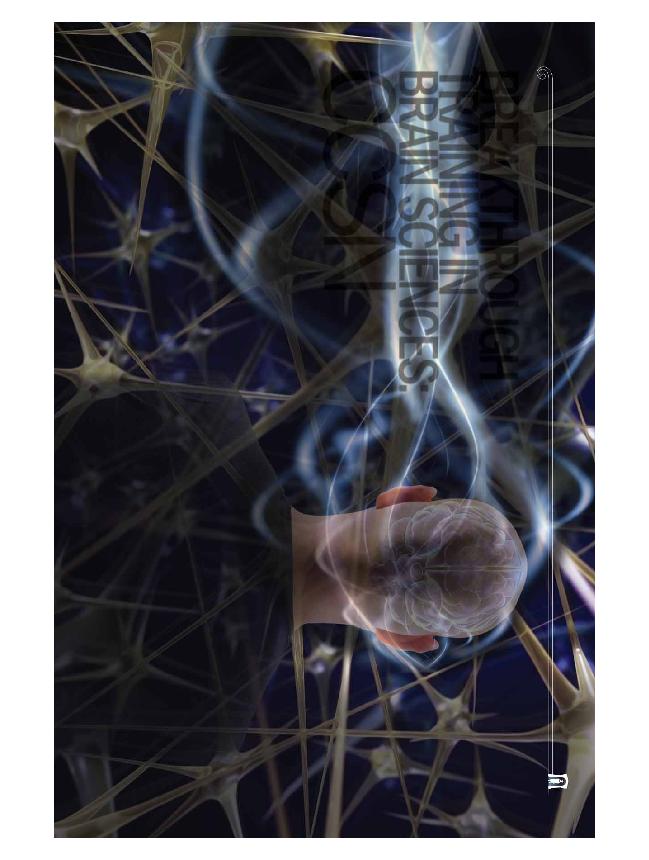
works, how it goes awry and how to fix it,"
says Deanna Barch, professor of psychol-
ogy, psychiatry and radiology. "And
coming up with ways to help people recover
from impairments will increasingly
depend on interdisciplinary work."
scientists through training that crosses
traditional boundaries to give doctoral
students strong interdisciplinary expertise.
Systems Neuroscience (CCSN), it is
one of a handful of programs in the
United States that takes a vertically
integrated approach to learning,
through a two-year series of courses
that mix psychology, biomedical
engineering and neuroscience.
Foundation through a five-year, $2.8
million Integrated Graduate Education
and Research Training (IGERT) grant,
fellowships. Kurt Thoroughman of bio-
medical engineering is the principal
investigator; Steven E. Petersen is the
lead faculty member from the Department
of Neurology in the School of Medicine,
as is Jeff Zacks from the Psychology
Department in Arts & Sciences. Additional
funding comes from the McDonnell
Center for Systems Neuroscience.
departments, but CCSN students are
different. While they fulfill the require-
ments of their home departments and
receive their degrees from these programs,
they also take classes in the CCSN
program, thus potentially adding a
semester to their graduate experience.
sciences. During the first year, they
take three challenging core courses --
in cognitive psychology, neural systems
and biological neural computation --
that lay the groundwork for the second
year of the program, which takes a
tailored approach. In that year,
students study advanced CCSN, with
faculty-led case studies in neural
science, then progress to CCSN Project
Building, in which they develop
research projects and grant proposals
in their area of interest.
has ties to all the areas covered by
CCSN. What neural systems misfire
processing? What kinds of emotional
processing deficits occur in individuals
with schizophrenia? How are these
systems similar or different in animals
and humans? What computations is
the brain of a person with schizophrenia
making -- and how are they different
from someone without this disorder?
another valuable opportunity: to
work closely with faculty members
from a range of disciplines. "CCSN
has moved beyond just a training
program for graduate students,"
says Barch, who serves on the CCSN
Steering Committee. "It is really a
community-building experience for
outside speakers, compare notes and
take part in "journal clubs," reading
articles that address a neuroscience
question from a multidisciplinary per-
spective. "What did they like about it?
If they were going to redo the study,
what would they do? What are the
implications for the field?" says Barch.
interested undergraduates and to the
lay public. Through a summer research
fellowship program, directed by Zacks,
undergraduates have the chance to
work with graduate students and faculty
members. And an outreach program
with the Saint Louis Science Center
allows doctoral students to gain the
experience of presenting their work to
interested members of the public.
Faculty find it intellectually stimulating
and a spur to scientific partnerships.
Graduate students receive cutting-edge
training, while undergraduates have a
fine summer experience in which
they begin thinking from an interdisci-
plinary perspective. A synergy also
develops, says Barch, since great
graduate students help attract top-notch
faculty and vice-versa.
training graduate students, but it
also reflected the values of the faculty,"
she adds. "We felt this kind of
program was necessary for the next
generation of scientists, so they
could do the work that was going
to move the field forward."
Maybe we'd like to help a stroke victim struggling to recover
function; maybe we have a friend with mental illness and
want to understand its genetic and neurobiological roots.
Or maybe we just want to see our children develop healthy
minds and emotional lives.